NCERT Solutions for Class 8 Maths Chapter 16 Exercise 16.1 Playing with numbers in English Medium and Hindi Medium to use it online free. All the solutions are given below in proper Hindi and English medium sections.
NCERT Solutions for Class 8 Maths Chapter 16 Exercise 16.1
If you need solutions in Hindi, Click for Hindi Medium solutions of 8 Maths Exercise 16.1
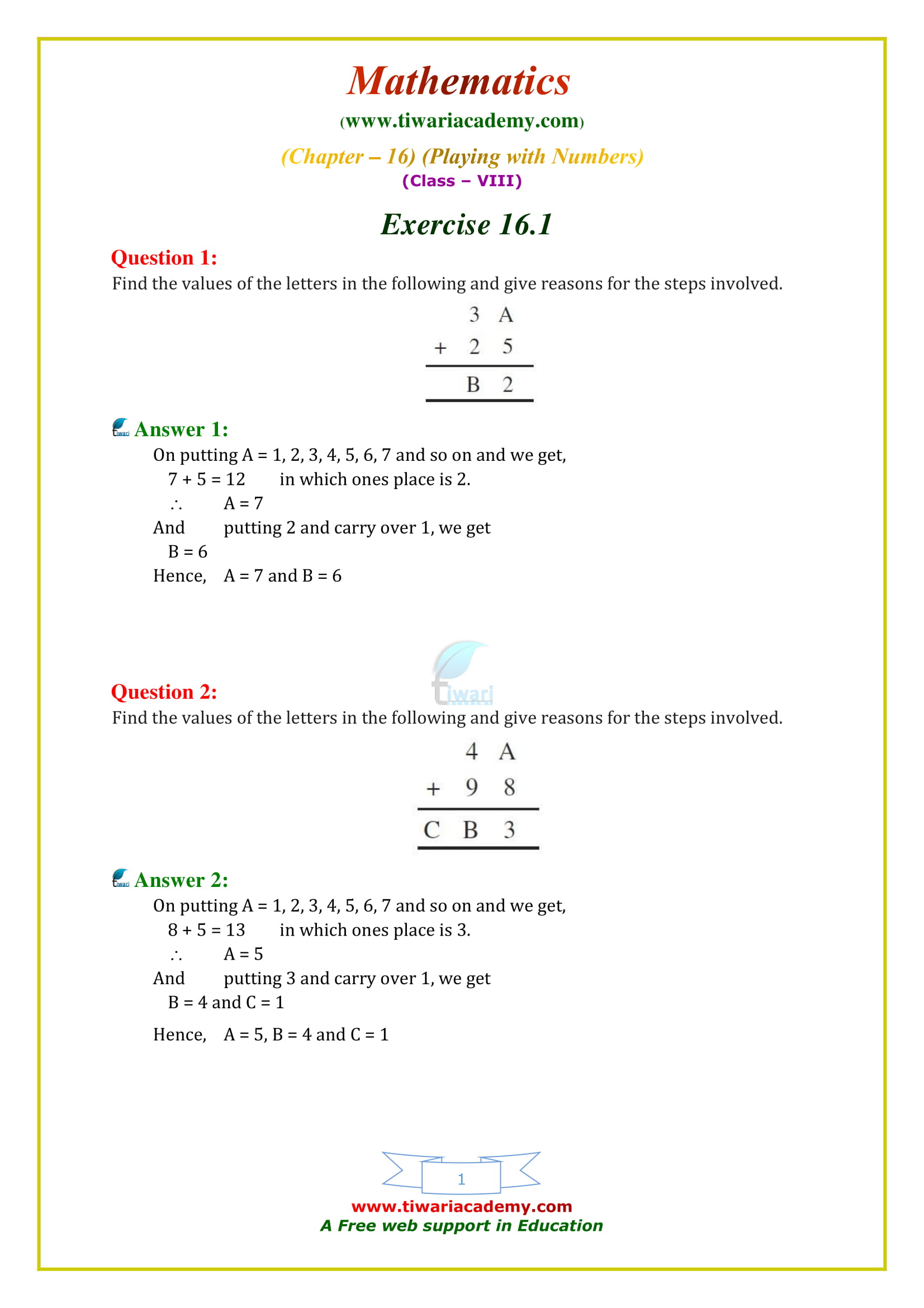
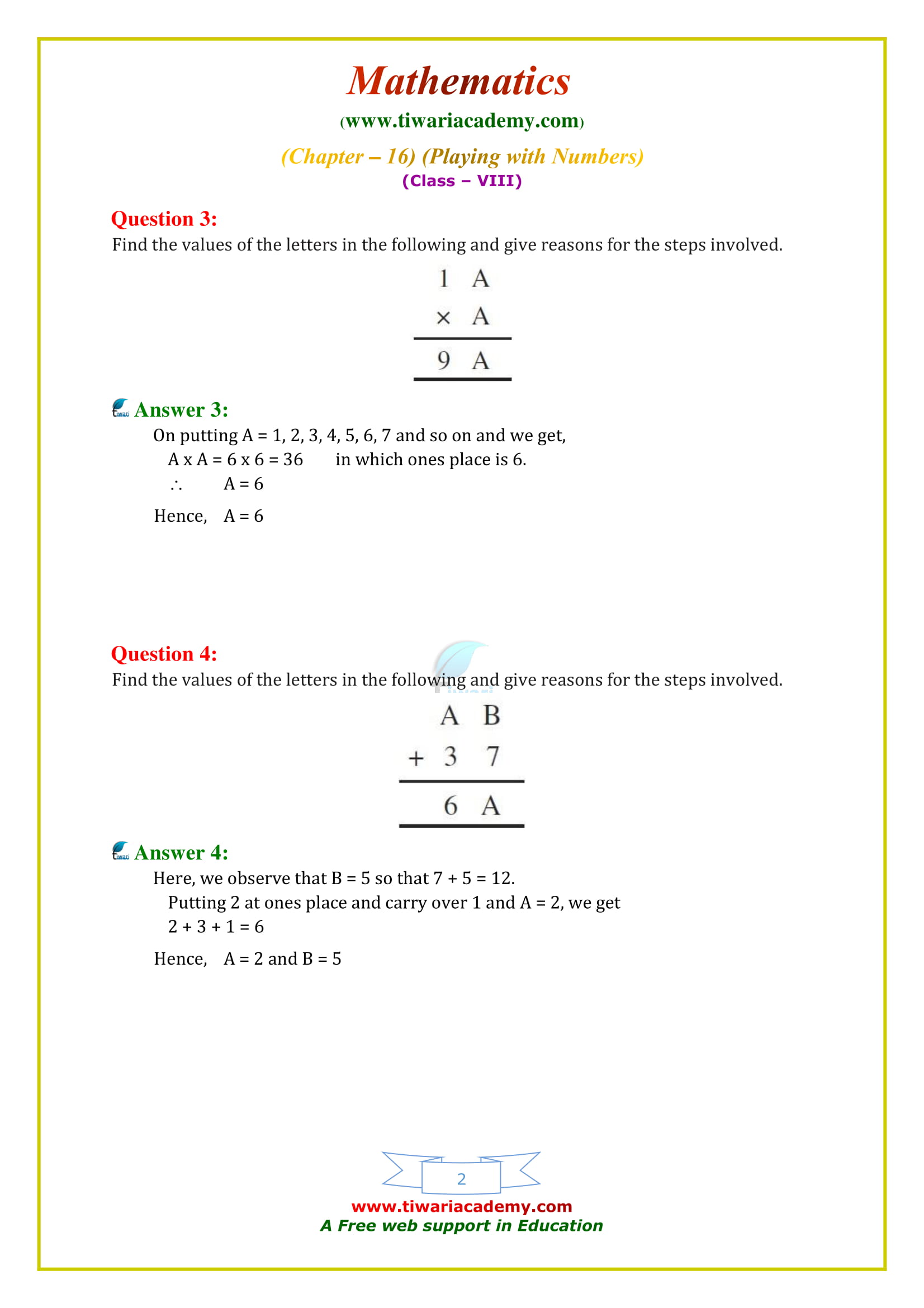
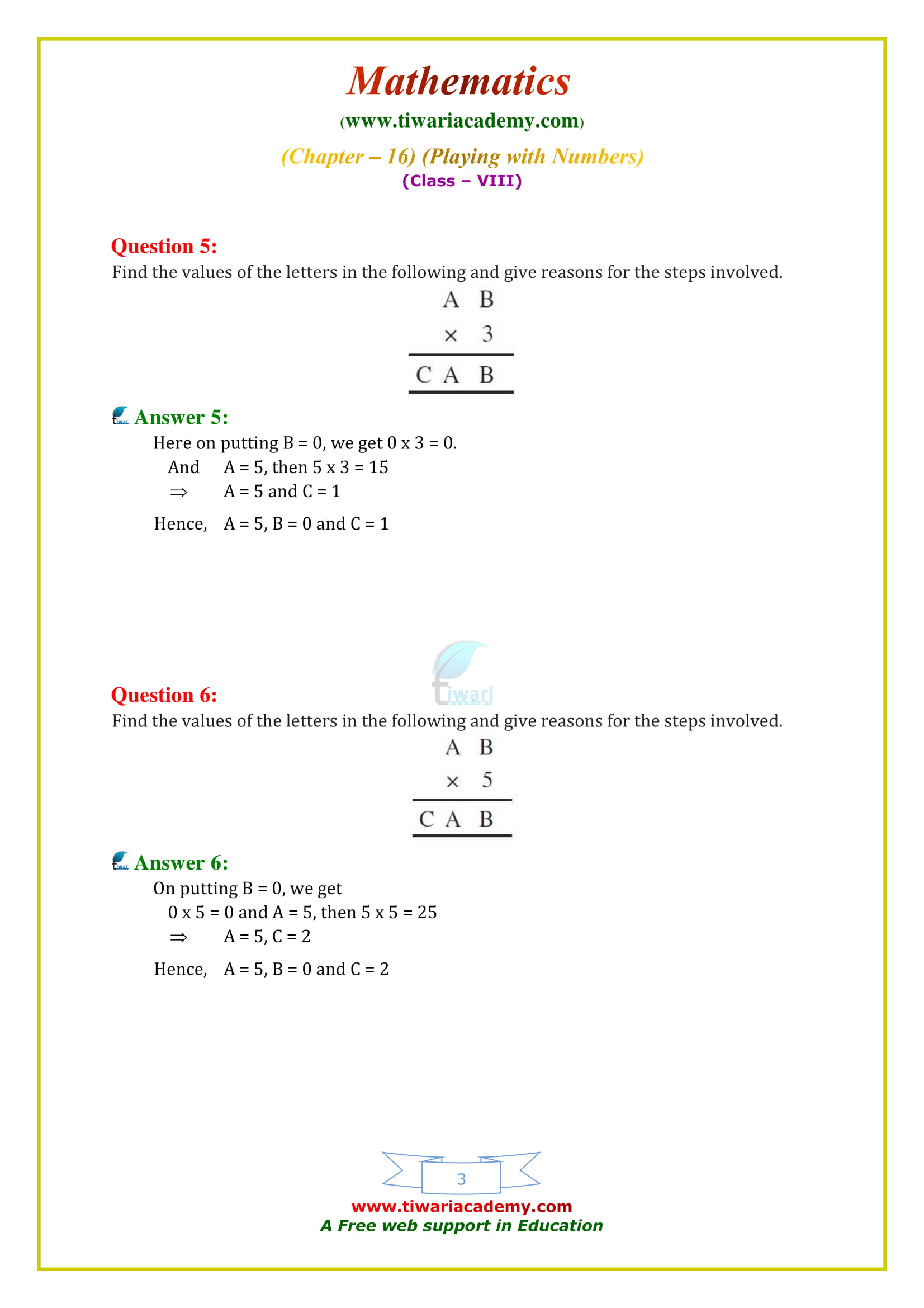
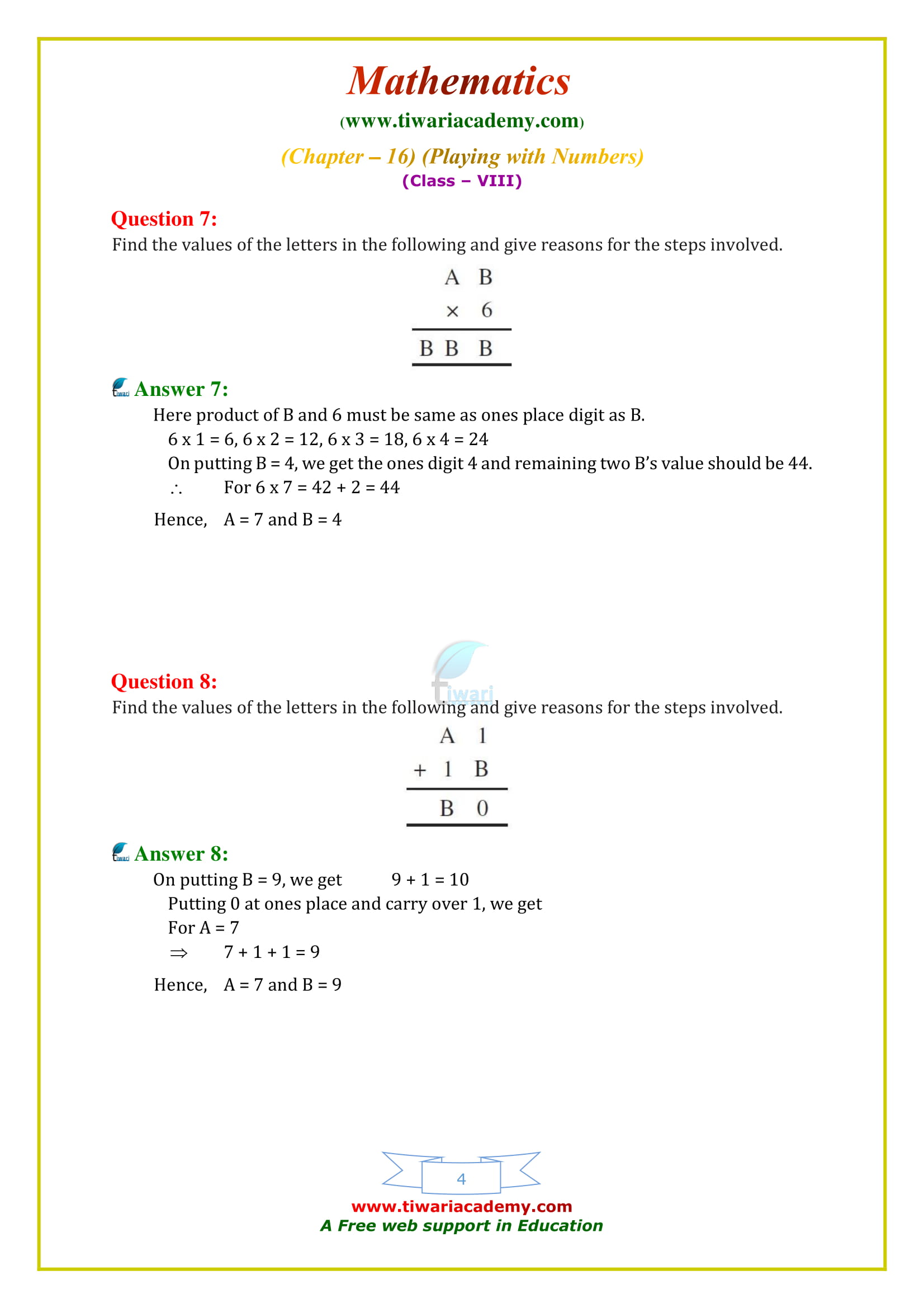
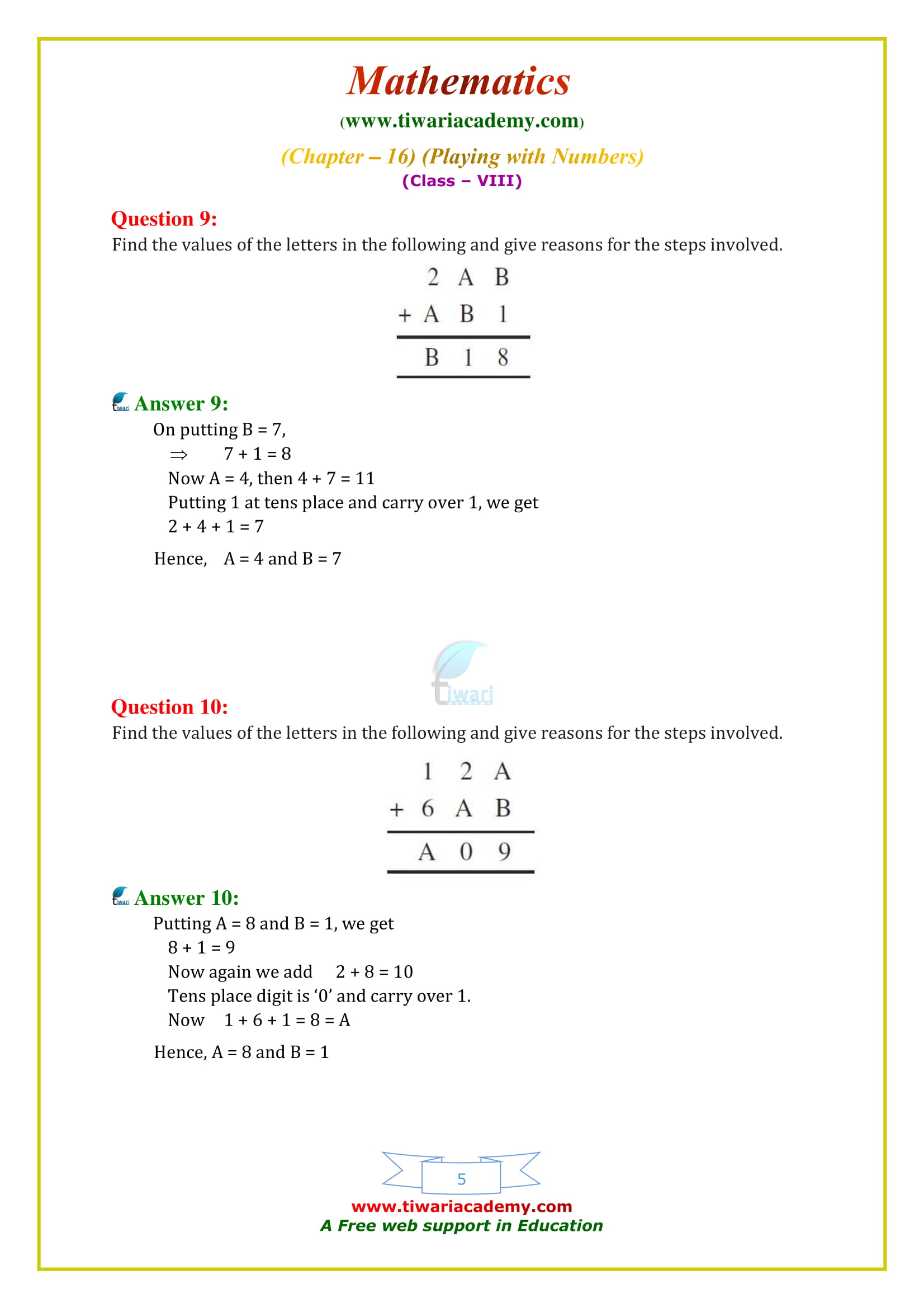
8 Maths Chapter 16 Exercise 16.1 in Hindi
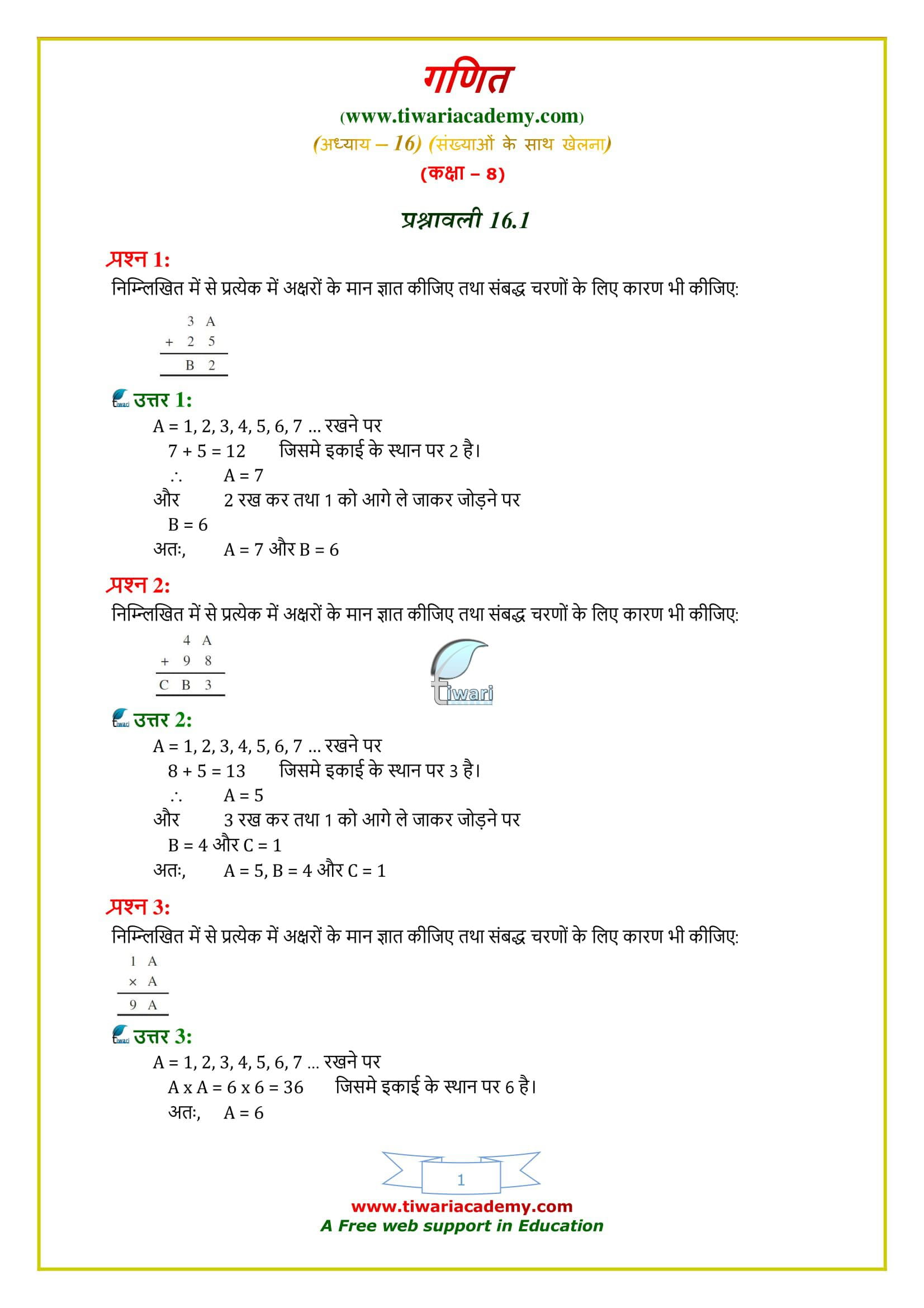
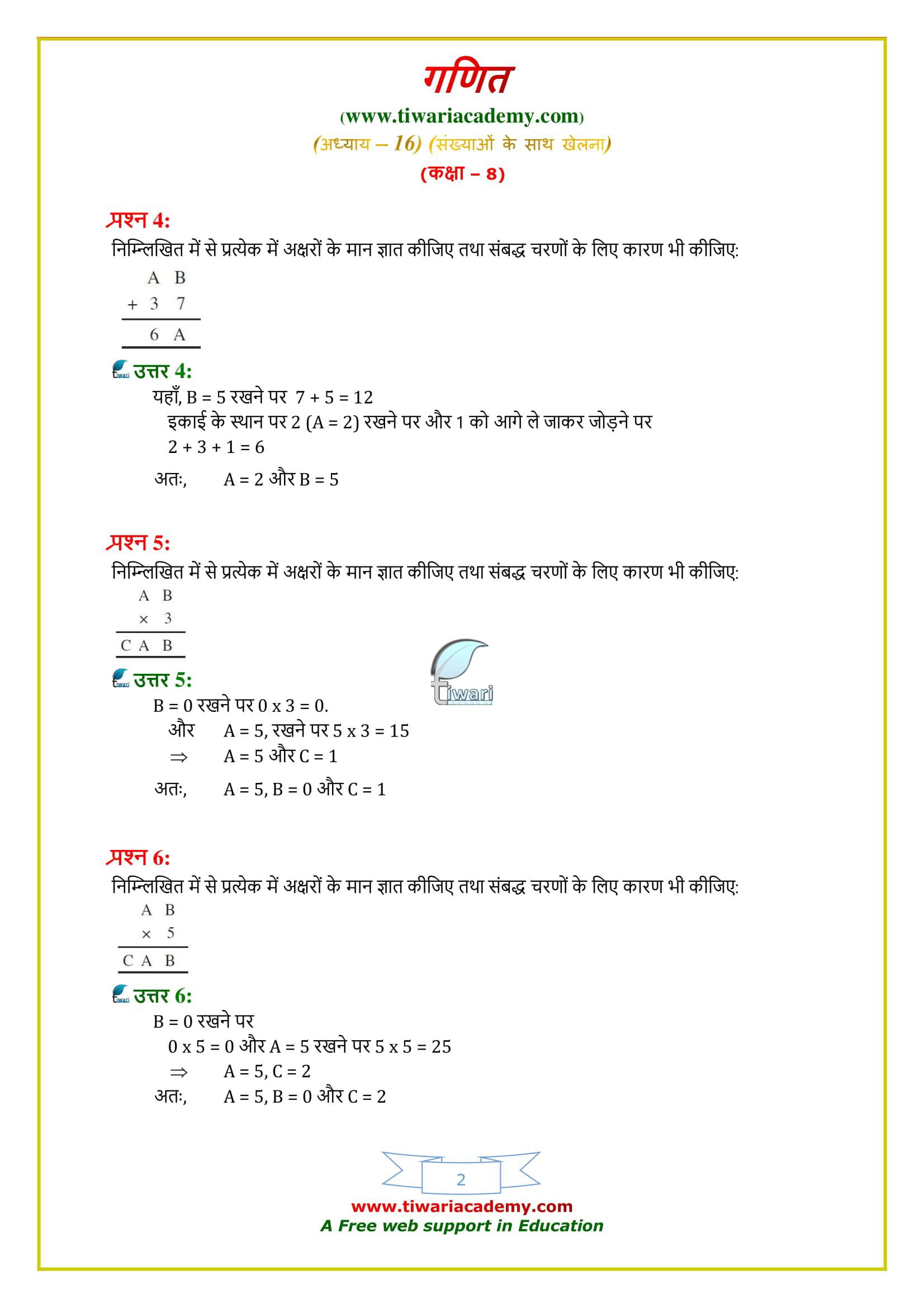
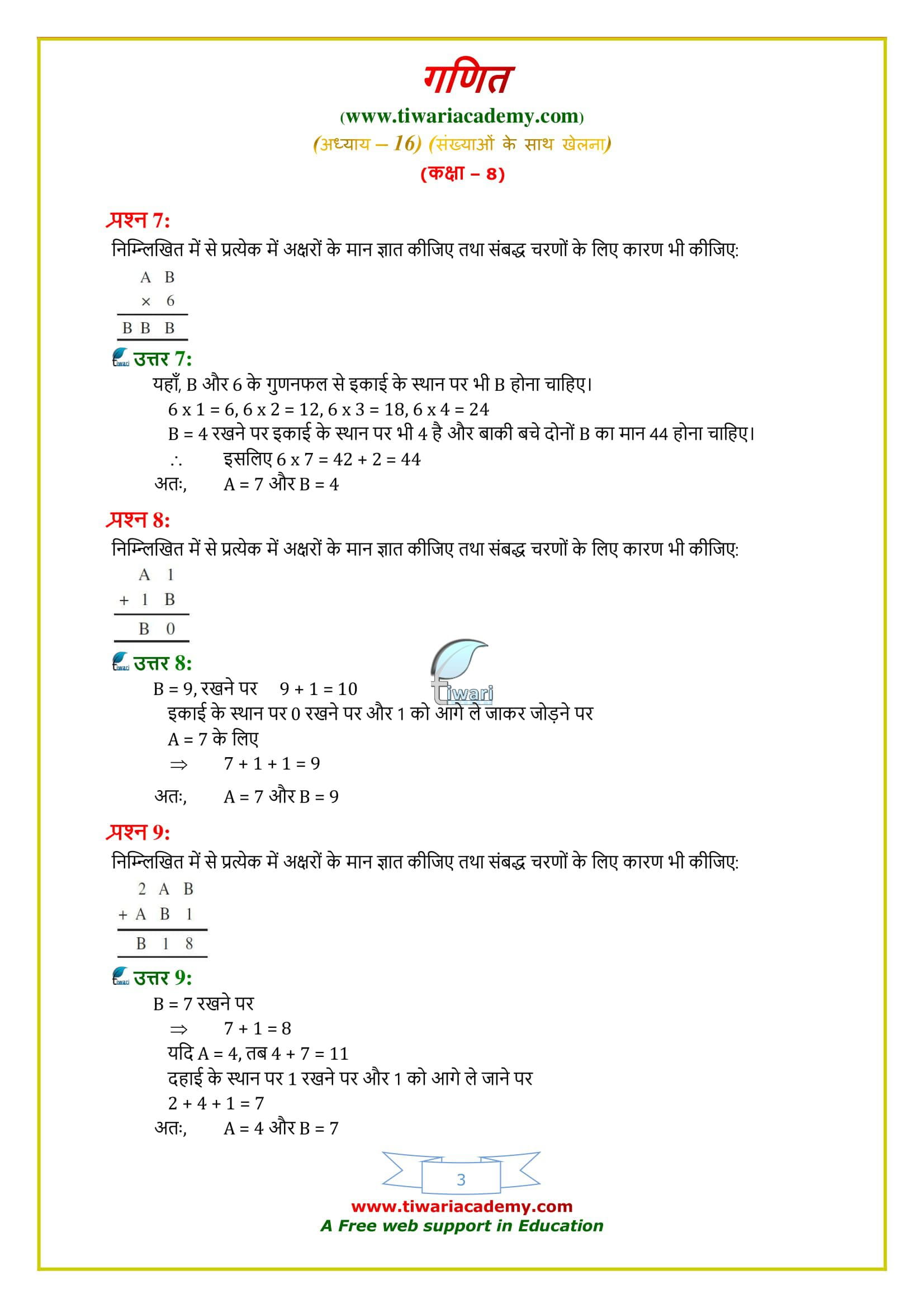
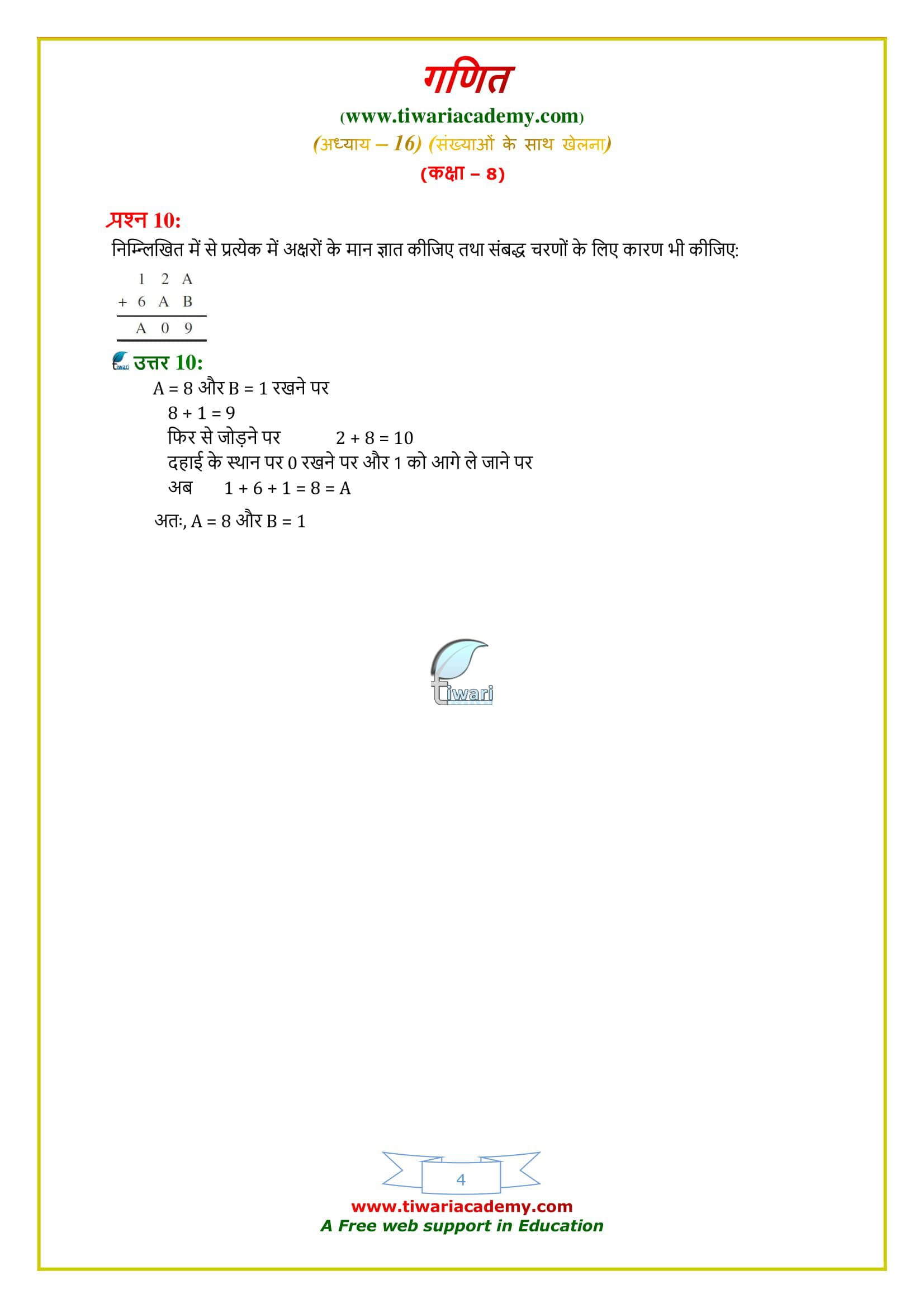
To get the solutions in English, Click for English Medium solutions.
Important Questions – Playing with numbers
Questions for Practice
1. If 123123A4 is divisible by 11, find the value of A.
2. 1y3y6 is divisible by 11. Find the value of y.
3. If N ÷ 5 leaves remainder 3 and N ÷2 leaves remainder 0, then N ÷ 10 leaves remainder 4.
4. Number 7N + 1 will leave remainder 1 when divided by 7.
5. If 31z5 is a multiple of 3, where z is a digit, what might be the values of z?
6. If from a two-digit number, we subtract the number formed by reversing its digits then the result so obtained is a perfect cube. How many such numbers are possible? Write all of them.
7. Fill in the blanks to make the statements true.
a). 20×3 is a multiple of 3 if the digit x is ______ or ______ or ______.
b). The sum of a two–digit number and the number obtained by reversing the digits is always divisible by __________.
c). The difference of three-digit number and the number obtained by putting the digits in reverse order is always divisible by 9 and ___________.
d). The difference of a two–digit number and the number obtained by reversing its digits is always divisible by ___________.
e). A number is divisible by 11 if the differences between the sum of digits at its odd places and that of digits at the even places is either 0 or divisible by ______.
f). If the digit 1 is placed after a 2-digit number whose tens is t and ones digit is u, the new number is ______.
g). If a 3-digit number abc is divisible by 11, then ______ is either 0 or multiple of 11.

